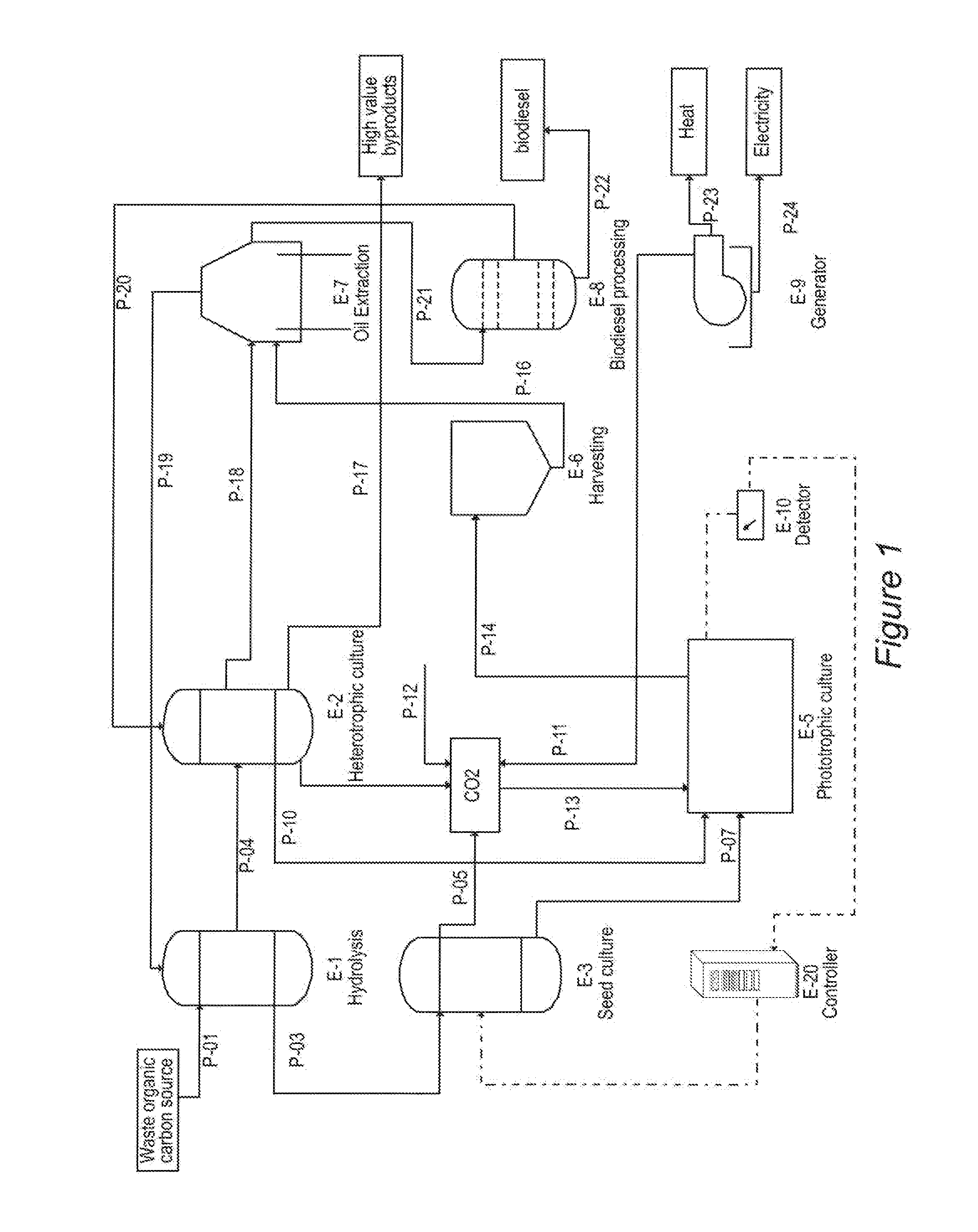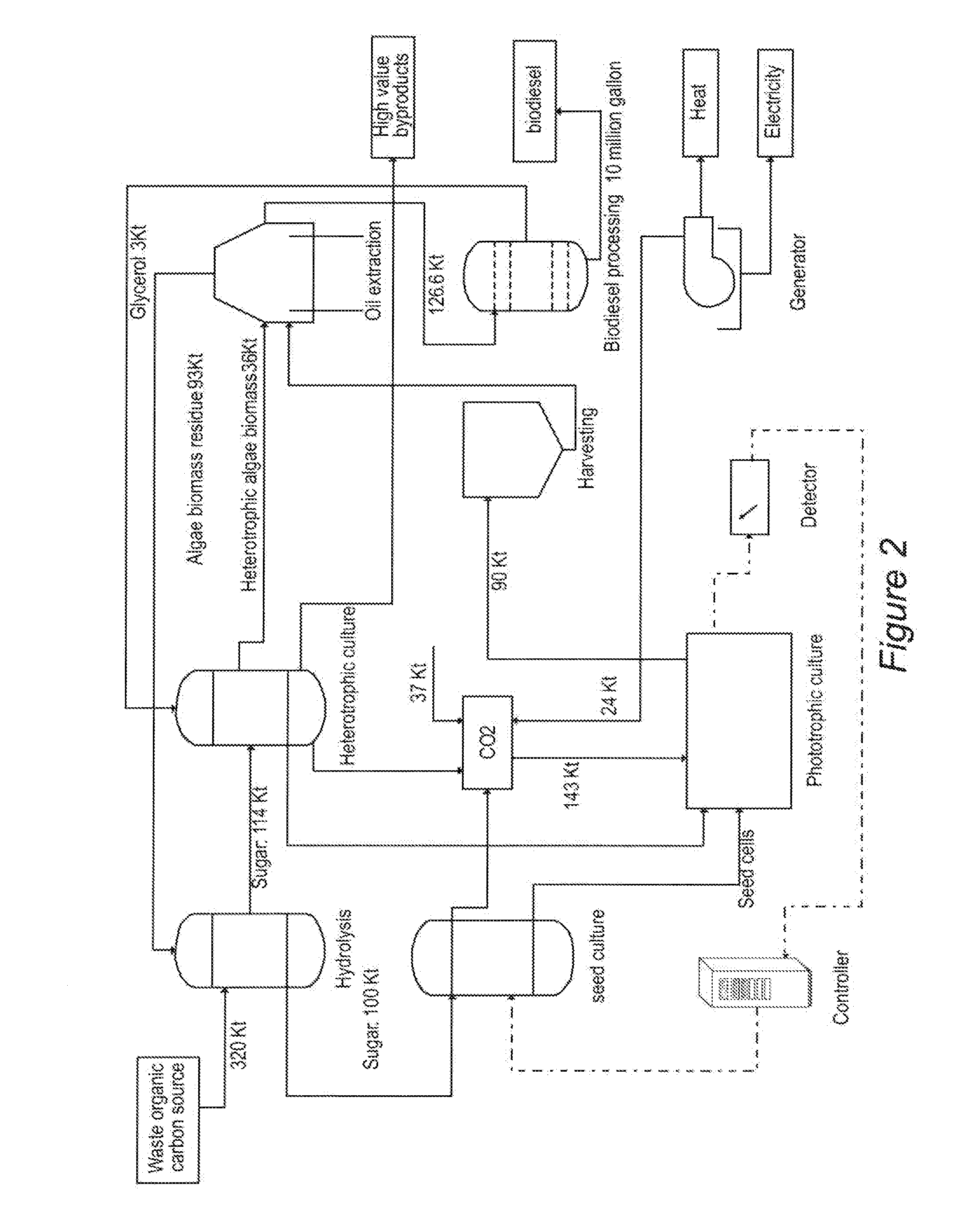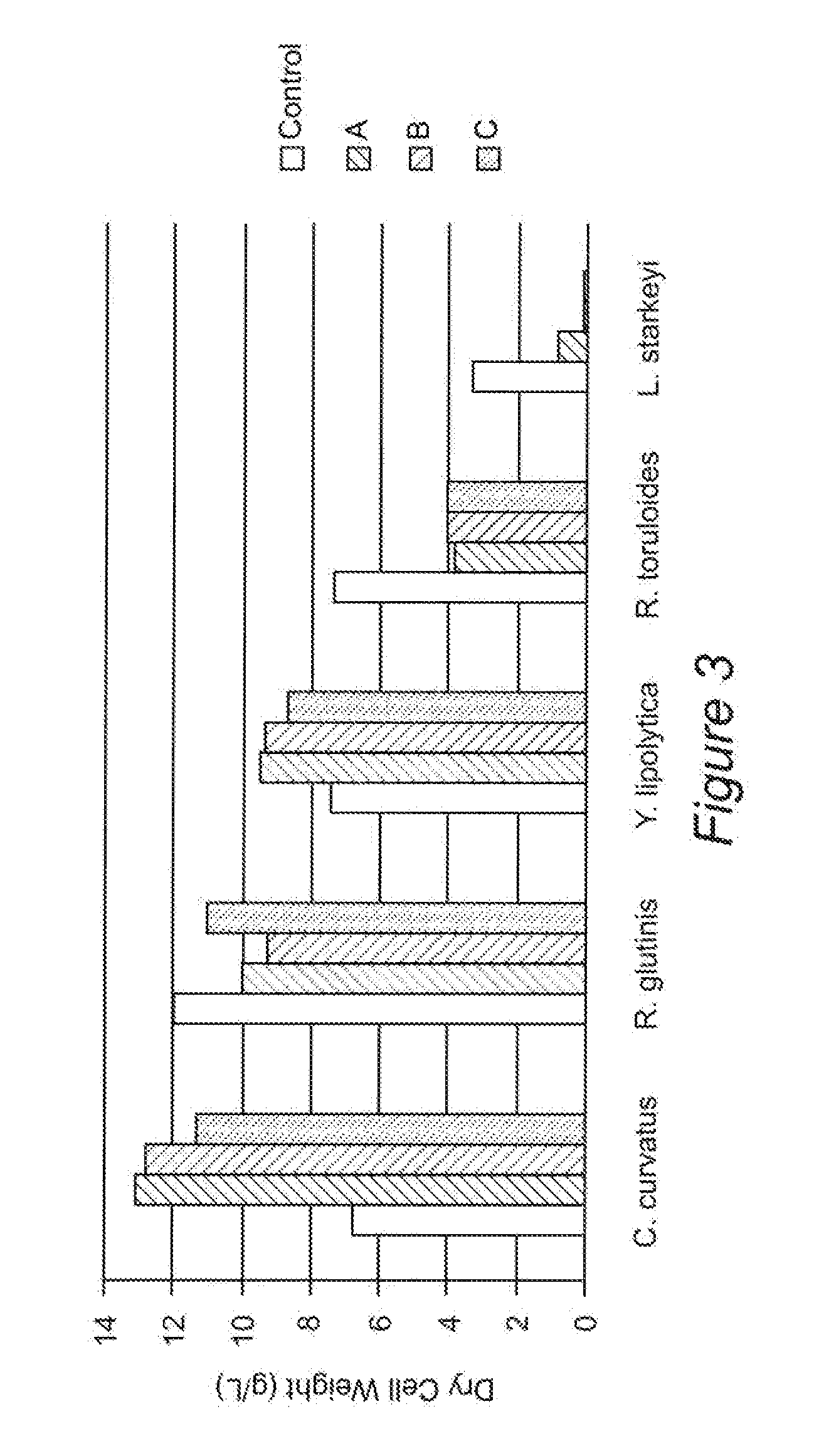Integrated system for production of biofuel feedstock
a biofuel feedstock and integrated technology, applied in biofuels, waste based fuel, biomass after-treatment, etc., can solve the problems of scale and capital cost, low productivity of phototrophic algae culture, and no commercial fuel production process, so as to reduce contamination, enhance flexibility, and reduce processing costs
- Summary
- Abstract
- Description
- Claims
- Application Information
AI Technical Summary
Benefits of technology
Problems solved by technology
Method used
Image
Examples
example 1
Flow Chart of Proposed System
[0042]FIG. 1 summarizes the incorporation of the heterotrophic and phototrophic growth process within an algal to biofuels production facility with Table 1 identifying key equipment and pipelines.
TABLE 1Equipment and pipeline list for Figure 1DescriptionEquipment ListE-1Hydrolysis of waste organic carbonE-2 Heterotrophic algae or yeast cultureE-3 Heterotrophic culture of seed cells for inoculation to phototrophic cultureE-5Open pond for phototrophic algae cultureE-6 Algae biomass settlerE-7 Wet algae oil extraction and separationE-8 Biodiesel production processorE-9Electricity generatorE-10DetectorE-20ControllerPipeline ListP-01Waste organic carbon to hydrolysisP-03Hydrolyzed waste organic carbon to seed cell culture tankP-04Hydrolyzed waste organic carbon to heterotrophic cultureP-05Produced CO2P-07Heterotrophic cultured seed cells to open pondP-10Residue N and P in effluentP-11CO2 produced from generatorP-12Extra CO2 supplementP-13CO2 to open pondP-14p...
example 2
Heterotrophic Growth Culture
[0044]Various organic waste streams can be used as feedstock for the heterotrophic culture process. After pre-treatment to various degrees, products will consist of sugars, small chain fatty acids and / or glycerols. Heterotrophic fermentation utilizing these varied carbon sources will be in large-scale fermentors with dedicated controlled of pH, dissolved oxygen, and temperature so as to provide an optimal condition for cell growth and cell density, which is known by the technical person familiar with state of the art. Most of the carbon and parts of the nitrogen and phosphorous will be consumed in this process however a certain amount of COD, nitrogen and phosphorous will remain in the effluent. Fortunately, the effluent will be used as a nutrient source for the phototrophic algae culture, allowing for cost reductions and greater recycling and utilization of system inputs. In turn, the effluent from the final phototrophic process will allow for even lower...
example 3
Other Available Algae Species can be Used in this Process
[0052]Besides Chlorella sorokiniana, as shown in examples 2, 4, and 5, a variety of other algae species can be cultured at both heterotrophic and phototrophic culture conditions and can be used in this process as described in examples 1 and 2. Although no experimental data on cultivation of these species within this specific process is shown here, it is obvious that these species can be used as production microorganism species, since it has been proved the ability of both phototrophic and heterotrophic growth
TABLE 6Examples of algae that can grow under heterotrophic and / or phototrophic conditionsAvailable speciesReferencesChlorella sorokinianaChen & Johns 1991Chlorella vulgarisKarlander & Krauss 1965Chlorella KessleriRezenka et al., 1983Chlorella protothecoidsLi et al., 2007Chlorella pyrenoidosaTheriault 1964Tetraselmis suecicaJo et al., 2004Scenedesmus obliquusAbeliovich & Weisman 1978Scenedesmus acutusSandmann & Boger 1981Ch...
PUM
 Login to View More
Login to View More Abstract
Description
Claims
Application Information
 Login to View More
Login to View More - R&D
- Intellectual Property
- Life Sciences
- Materials
- Tech Scout
- Unparalleled Data Quality
- Higher Quality Content
- 60% Fewer Hallucinations
Browse by: Latest US Patents, China's latest patents, Technical Efficacy Thesaurus, Application Domain, Technology Topic, Popular Technical Reports.
© 2025 PatSnap. All rights reserved.Legal|Privacy policy|Modern Slavery Act Transparency Statement|Sitemap|About US| Contact US: help@patsnap.com



